Art of Wreck-It Ralph – Book Review
If you hadn’t heard already, Disney’s Wreck-It Ralph hits the UK cinema screens this Friday (8th February), and in what is now a tradition when Disney or Pixar release a film, an excellent “Art of Disney” book has also been released to accompany it.
Usually, the ‘Art Of’ books are a fantastic study for anyone interested in pre-production, character designs and visual concepts – and this book is no exception – however, this one will also appeal massively to games fans, especially those nostalgic enough to remember the days of 8-bit games (which is all of us, right?).
As with all the ‘Art Of’ books, it is less about text and more about the images – there are some great snippets of information that explore the process of making this film, but mostly the text is only there to explain the images a little more. Whether you were an 8-bit game fan or not, the most fascinating thing about this book is seeing how Disney took a very flat, 1-dimensional style and evolved it into a 3D world.
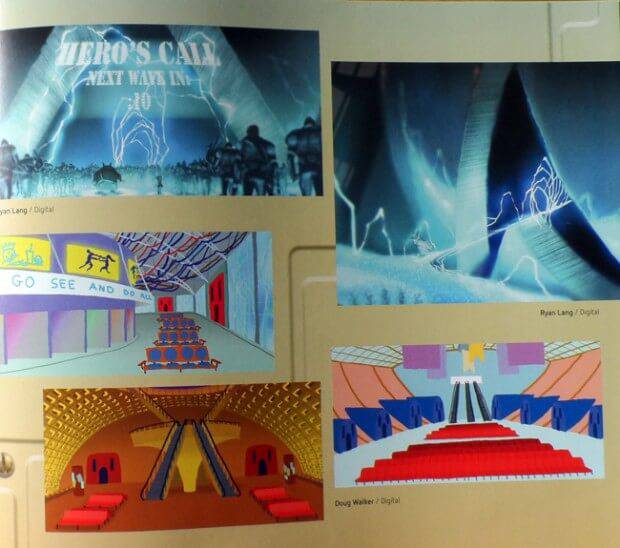
Aside from the preface by John Lasseter and the foreword by director Rich Moore, the book splits into 3 distinct areas – characters, the worlds and the lost characters/worlds (and ideas that didn’t make it into the final film).
Characters
Here we see the evolution of all the characters from 8-bit to ‘Disney-esque;’ from rough sketches to the final CGI version. To accompany the images the artists talk about the difficulty of taking the original characters and really fleshing them out with detail and personality – in particular, how they went about making a tiny pixel guy (Fix-It Felix Jr.) a “really likable, funny guy, sort of Steve Carrell in the 40 Year Old Virgin, Richie Cunningham from Happy Days, and Mario from Donkey Kong rolled into on”.
Wreck-It Ralph (the character) went through quite a few transformations, as they didn’t even know what animal to make him to begin with – he wasn’t always human. Ralph’s evolution from a ‘Donkey Kong-esque’ bear to the angular guy we now see takes up most of this section of the book. Look out for some beautiful illustrations and sketches by Bill Schwab.
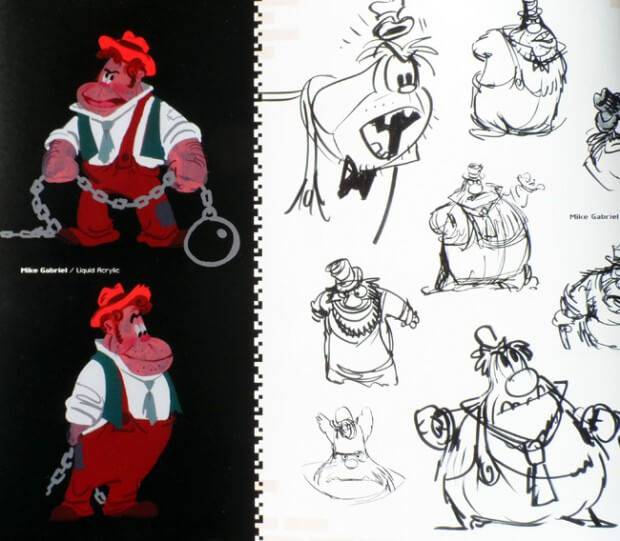
The Nicelanders in particular are a great example of starting with very the simple shapes (basically thumbs with eyes) that work in a game environment, and the work it take to adapt that in to to the fully dimensional characters with individual looks, clothing and personalities that they became.
The Worlds
Quite a lot of the book is spent looking at the creation of the worlds, because as well as the world of Wreck-It Ralph, there are 2 very distinct worlds that portray different gaming genres, plus Game Central; the New York’s Grand Central Station inspired hub that brings all these worlds together.
Hero’s Duty is a world that mimics our modern-day ‘HD’ games such as Call of Duty, Halo and other first person shooter games. This part of the book is notable for it’s black, white and green colour palette, and you would be forgiven for thinking you had picked up a book about games graphics. It’s great to see the contrast between Fix-It Felix’s “squares and perpendiculars and the triangles and diagonals of ‘Hero’s Duty’ world”.
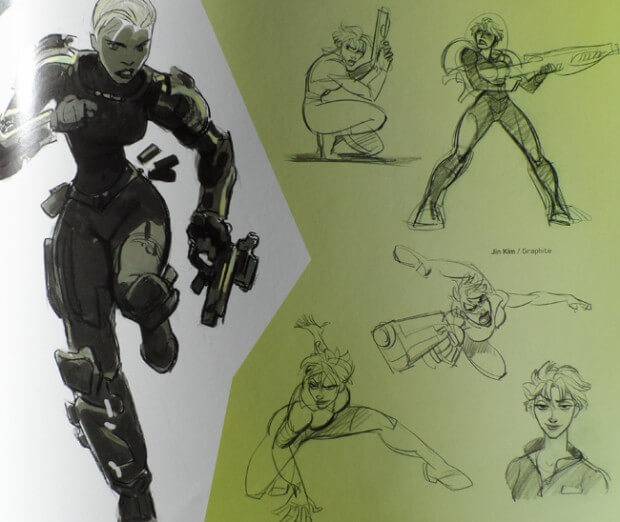
Another turn of the page leads us to a different style and colour palette for the world of Sugar Rush – a lesson on how to make a world “mouth wateringly appetizing”. The challenge for the artists was making a world out of foodstuffs without making it too juvenile. Art director Mike Gabriel gives the tip – “when picking colours or textures for any food element, they kept adjusting until they wanted to eat it!” That may explain why this section of the book is swimming with pinks, reds and chocolate colours.
The artists behind this world go on to show how they built the entire race track scene out of real sweets and confectionary to find the correct lighting and texture for the CGI foods. This same practice was extended to the props, clothes and other locations, and there are some great photographs that show this. (For example, what DOES a spaceship ploughing into a mound of Angel Delight look like?!)
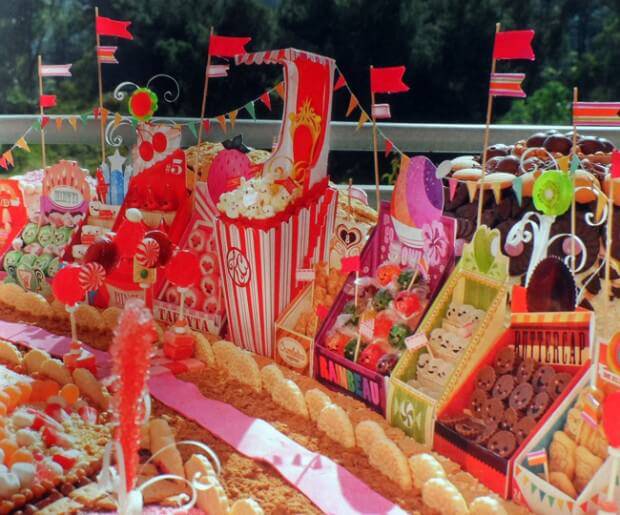
There is a brief look at some of the secondary worlds – Pacman, Tappers and the arcade – a real treat for the retro gaming fans out there. Keep an eye out for some beautiful illustrations by Lorelay Bove.
By the end of the ‘Worlds’ section you really get an idea of the challenge the artists faced in setting up so many locations that had to stay faithful to their related game genre, while gluing together the visual style of the film as a whole.
Bits that didn’t make the film:
The final part of the book looks at the lost worlds and characters that never made the film. Unfortunately, the ‘Extreme EZ Livin’ 2’ world; a mash up between ‘The Simms’ and ‘Grand Theft Auto’, didn’t make it into the final film – but you can see the fun they had dreaming up some of these ideas.
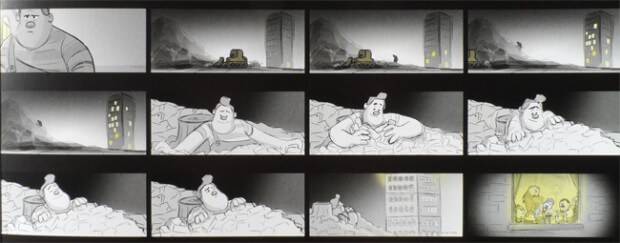
Overall, this book is not just for die-hard Disney and pre-production fans; nostalgia and games fans will appreciate this book as well. It is a lesson in how fun and experimental the whole pre-production stages can be, and will leave you feeling jealous that you weren’t working on this film.

